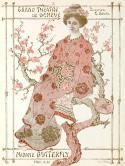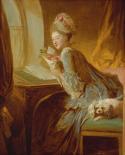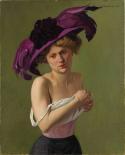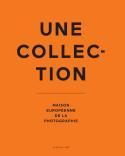Art Of The Day Weekly
#398 - from 17 September 2015 to 23 September 2015
IN THE AIR
Letter from London: pop is back!
LONDON –Pop art rhymes with Warhol, Lichtenstein, Rosenquist (USA), Hamilton and Hockney (G.B.). But not only. As in the song by Pink Floyd, there is a dark side to the moon, or at least one that is less-known: it is the pop movement in the rest of the world. Like its older brother it dissects the consumer symbols of mass culture, and it blends with themes such as feminism, anti-colonialism, communist and libertarian utopias. The exhibition digs out a good selection: the curators travelled the world over, from Brazil to Spain, from Japan to former Yugoslavia to find a few treasures. Next to Errò and Rancillac, we have a video of the Menesunda, the mythical exhibition by young Marta Minujin in Buenos Aires in 1965, where visitors went through sixteen different universes. Then there are installations that play with sexuality and gender, sometimes in a very explicit manner (Nicola L, Natalia LL, Angela García, Jana Zelibska). Last, ensembles that were hidden for nearly fifty years such as the huge Hommes rouges by Henri Cueco and even a folk version, direct from Iran, Cuba or Columbia. From one hemisphere to the next: just like pop music, pop art has conquered the world!
• The World Goes Pop at the Tate Modern, from 17 September 2015 to 24 January 2016.
ARCHAEOLOGY AND HISTORY

Programme of the Grand Théâtre de Genève, Madame Butterfly, 1909-1910 season, Bibliothèque de Genève.
Osiris vs. Madame Butterfly
The fascination exerted by Egypt is not about to die: our over technological and rational world cannot resist the call of Osiris. The Institut du monde arabe shows the fruit of the diggings of the ancient cities of the Nile delta, which paid an annual tribute to him that in many ways remains mysterious (as of 8 September). Closer to home, the Celts (at the British Museum as of 24 September) are also among the favourites of the public at large. These people with no genetic unity, pushed towards Europe’s North-West limits by the Roman expansion, fascinate us by their science of jewel making, their abstract art and their cultural universe including music, language and the druids. They influenced Art nouveau designers as well as the tenants of the New Age philosophy. It is the same type of attraction Japan had when it was rediscovered by the Western world at the end of the XIXth century. While artists such as Van Gogh and Bonnard drew a good part of their inspiration from that culture, it was also a means to look into a wealthy religious pantheon through culture, as can be seen in the Buddhism of Madame Butterfly at the MEG in Geneva (as of 9 September). Congo is in the heart of Africa, and while the Fondation Cartier opened the country’s contemporary creation to us (since 11 July), the Metropolitan Museum in New York opens the door of the jungle of its past, which begins for us with the diplomatic gifts of the XVIth century -ivory, clothes made out of raffia -, up to the powerful “figures of power” pierced with nails used to slow down the European colonisation (as of 18 September). The Louvre (starting on 24 September) and the Royal Museums of Fine Arts of Belgium (as of 11 September), for their part, launch themselves into a prospective exercise: what will our world look like in 2050?
ANCIENT MASTERS

Jean-Honoré Fragonard, Le billet doux ou La Lettre d'amour, ca 1775, oil on canvas, 83,2 x 67 cm, New York, The Metropolitan Museum, collection Jules S. Bache, 1949, © The Metropolitan Museum of Art, dist. Rmn-Grand Palais / image of the MMA.
Images of the woman, from Botticelli to Fragonard
He is the founder of modern painting, a figure comparable to that of Dante in literature, who was almost his contemporary, at the turn of the XIVth century. But it is not easy to show Giotto since a great part of his works is frescoes that cannot be removed from their venue. Therefore the Palazzo Reale in Milano (since 2 September) turned to panels and altarpieces, among them the spectacular Baroncelli and Stefaneschi polyptychs. Botticelli is easier to move about, with his image of aerial grace. His existential problems- he was attached to Savonarole who burnt part of his work -, he met an extraordinary vogue since he was rediscovered by the Pre-Raphaelites. This true revival is explored in Botticelli Renaissance at the la Gemäldegalerie in Berlin (as of 24 September). The Medicis, back in Florence following the Republican interludes, rested their power on an elaborate visual propaganda, signed Bronzino, Vasari or Salviati, as can be seen in Portraits at the Medicis courtat the musée Jacquemart-André (as of 11 September). Another golden age was that represented it seems by Fragonard and his XVIIIth humorous, light and especially loving century, at the musée du Luxembourg (as of 16 September). Another vision of this tormented century is that of Elisabeth Vigée-Lebrun , one of the rare feminine artists of her time, shown at the Grand Palais (as of 23 September). Her long nomadic life – she died at the age of 87 in 1842 –allowed her to experience up close the upheavals of the Revolution and of the Restauration period after having been the portrait painter of Marie-Antoinette.
MODERN ART

Félix Vallotton, The Purple Hat, 1907, oil on canvas, 81 x 65,5 cm. Private collection, Villa Flora, Winterthur © Private Collection, Villa Flora, Winterthur. Photo Reto Pedrini, Zürich.
Tzara, Balla, Villa Flora...
Next to the large retrospectives of the major painters, the tendency is to delve into hybrid and peripheral figures such s writers, critics, gallery owners or museum directors. We have recently seen beautiful exhibitions dedicated to Kenneth Clark or Michel Leiris. Tristan Tzara, the founder of Dadaism, has been chosen for this beginning of the exhibition season at the musée d’Art moderne et contemporain in Strasbourg (as of 24 September) with a selection of 450 works by his friends, from Arp to Zadkine. Other actors of the avant-gardes are in the limelight: Piet Mondrian, the apostle of geometry, is welcome to the Martin-Gropius-Bau in Berlin (as of 4 September) which shows what he produced before he entrusted lines: this includes portraits and landscapes! The Fondazione Magnani Rocca, near Parma, studies the career of Giacomo Balla by reading it in light of the manifesto of 1915, Futurist Reconstruction of the universe (as of 12 September). Norwegian artist Edvard Munch is honoured twice: at the Van Gogh museum in Amsterdam, where he is confronted to Van Gogh himself (as of 25 September) to understand how the two artists dealt with comparable themes such as landscapes or isolation? On that same day the Albertina in Viena inaugurates its own retrospective of Munch, by bringing together 120 of his works, including paintings, prints and drawings. A more recent creator but just as prolific, Cuban artist Wilfredo Lam (the son of a Chinese man and a descendant of slaves) is presented at the Centre Pompidou with 300 works that show the genesis of a tropical Surrealism largely cultivated in Paris (as of 30 September). Two transversal exhibitions take us to different worlds: at the Musée d’Orsay, the universe of prostitution and courtisans in the XIXth century is shown (as of 22 September) while Villa Flora, at the musée Marmottan-Monet, shows the cozy universe of a Swiss family, the Hahnlosers, who had a passion for Bonnard and the Nabis (as of 10 September).
BOOKS
A hymn to photography
In 1982, an elderly Brassaï wrote a letter to the mayor of Paris, Jacques Chirac, to thank him. Indeed, a French public institution had finally bought his photos! The Americans had started much earlier and even the French museums had already shown an interest in his drawings and paintings. But not his photographs. By tracing the genesis of a recent and emblematic collection, started in 1980, this book helps the reader measure the spectacular emergence of a discipline, which not long ago was still considered as merely documentary. The 21,000 snapshots at the Maison européenne de la photographie include the greatest names of the XXth century, from Cartier-Bresson to Bill Brandt, from Alvarez-Bravo to Irving Penn. But it also comprises mythical series such as the American by Robert Frank, or New York by William Klein, with a significant Japanese presence, up to the most recent tendencies in landscaping, in photo-journalism or still lives (the bombs and mines shot by Raphaël Dallaporta like objects of luxury on a black background. This is a sensitive and impressive reflection of our times.
• Une collection. Maison européenne de la photographie, directed by Jean-Luc Monterosso, Actes Sud, 2015, 424 p.
OPENINGS OF THE WEEK

PANORAMA 17 - TECHNIQUEMENT DOUCE
18 September 2015 - TOURCOING - Le Fresnoy
The 17th annual gathering of new and striking images
IN BRIEF
BEIRUT – The 6th Beirut Art Fair is being held from 17 to 20 September 2015.
FLORENCE – The 29th Biennale dell'antiquariato is being held from 26 September to 4 October 2015.
KAUNAS (Lithuania) – The Biennale of contemporary art is being held from 18 September to 31 December 2015.
KOBE – The 5th Biennale of contemporary art is being held from 19 September to 23 November 2015.
MOSCOW – The 6th Biennale of contemporary art is being held from 22 September to 1 October 2015.
PARIS AND EUROPE – The Heritage Days are being held on 19 and 20 September 2015.
WADSWORTH (Connecticut) - The Wadsworth Atheneum Museum of Art, one of the oldest museums in the United States (founded 1842), reopens on 19 September 2015.
ON ART-OF-THE-DAY.INFO
This week, do not miss…

2050. A BRIEF HISTORY OF THE FUTURE
BRUSSELS - The Royal Museums of Fine Arts of Belgium present a unique and innovating project built around the future! Paintings, sculptures, photographs, videos, installations and digital art works: over 70 works of contemporary art question our future at the horizon of 2050. From 11 September 2015 to 24 January 2016.

